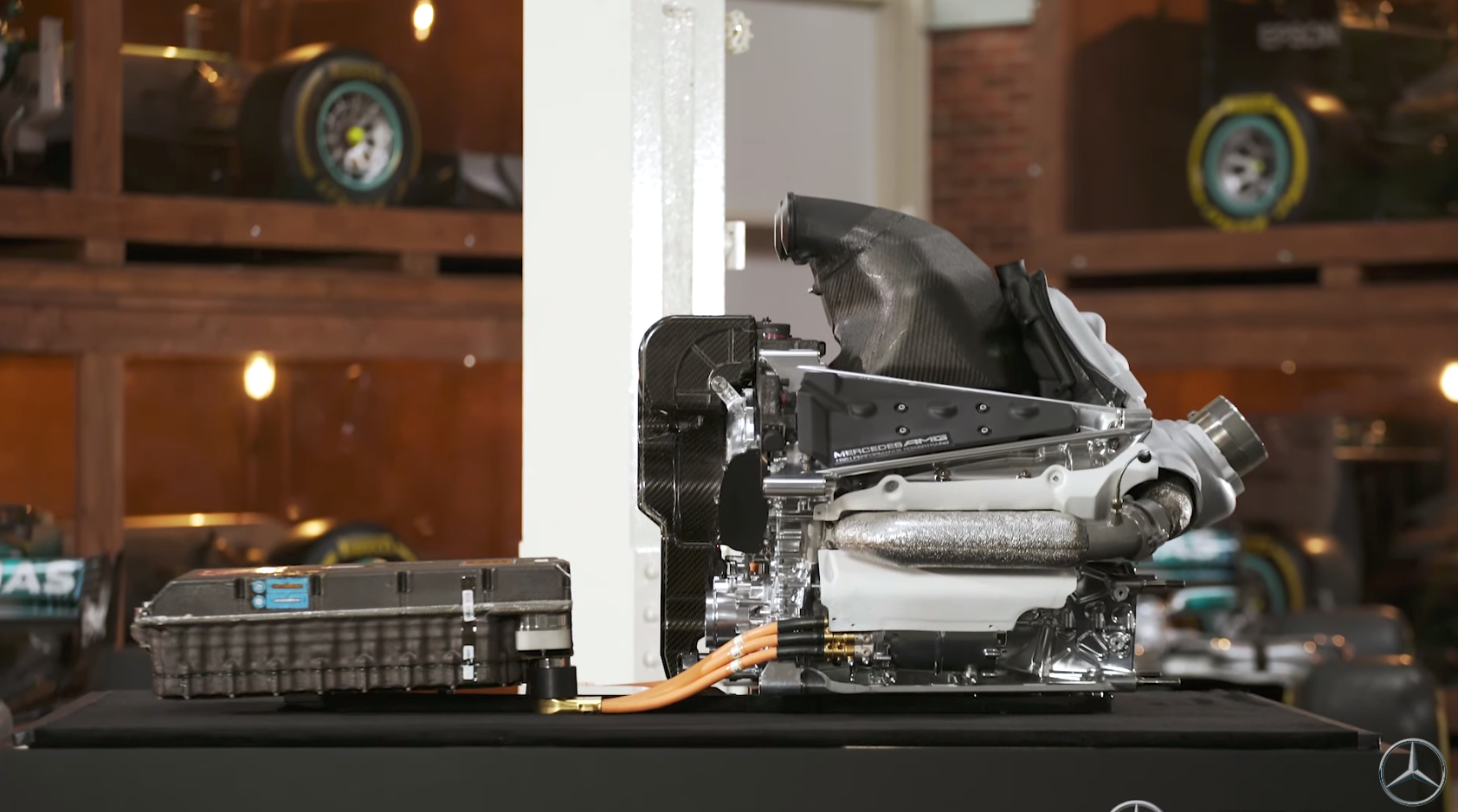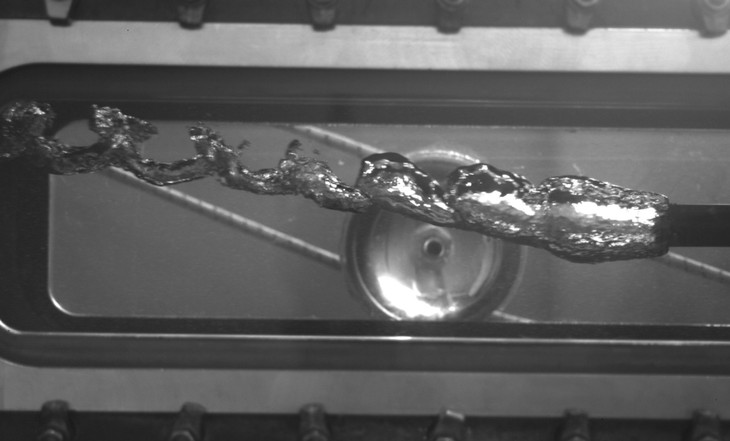


Mercedes-AMG Petronas Motorsport scored its first victory of the Formula One hybrid-electric era at the 2009 Hungarian Grand Prix, with driver Lewis Hamilton. That early system relied on discrete battery pack and power electronics modules that sent energy to and recovered it from a 60-kilowatt electric-assist motor. It also laid the groundwork for the mighty Mercedes-Benz SLS AMG Coupe Electric Drive of 2013, according to Andy Cowell, managing director of Mercedes-AMG High-Performance Powertrains, in a video released by the F1 team.
Formula One termed these systems “Kinetic Energy Recovery Systems” or “KERS.” “Today we would call that a ‘regenerative braking system,’ recovering waste energy from the car,” said Cowell. “The mass and velocity of the car, recovering that energy through an electric motor, energy converted in the power electronics and stored in the cells of the energy store, then using that energy to then propel the car as the car accelerates.”
While hybrid-electric production models seek to improve fuel efficiency, the technology at work is the same. “In motorsport we use it to go quicker, in the road car world we use it to go further with the same amount of fuel,” he explained.
The motorsport world is also noted for its relentless development pace, and that has seen Mercedes make impressive progress on its technology since the beginning. The prototype system first tested in 2007 was larger and heavier, at 236 pounds. By the time Hamilton won the Hungarian Grand Prix two years later, the race system was whittled down to 55.8 pounds, and system efficiency improved from 39 percent to 70 percent.

“Two years later in 2011, we had taken these two units and combined them into this single box, where we had the energy store system, the control electronics, and the computation to manage it,” explained Cowell.
The real advance came a few years later. “This has then evolved in 2014 into a slightly larger box, but it’s got double the energy store in it, three times the amount of power delivered, two inverters and significantly more processing power,” he said.
Today, the module containing the batteries weighs only 44 pounds, which is the lightest permitted by F1 regulations. A 12-fold increase in the energy density of the battery cells lets the pack provide 200 kW of boost, while efficiency has climbed to 96 percent.
An increase in overall system voltage has driven these improvements. “The higher you go in voltage the lower you go in current for the same amount of power,” said Cowell.
As with aerodynamic drag on the outside of the car, which increases with the square of vehicle speed, electrical losses within the drivetrain increase with the current pumping through the system.
That’s why today’s race car operates just shy of 1,000 volts, and has charted a course that production models can follow. “That is a journey that the road car world is also taking,” Cowell said. “A lot of the current systems operate at 400 volts. In a few years time we’ll see them go up to 800 volts and then get close to the thousand-volt mark.”
So while it may be difficult at times to see the connection between the speeding missiles on the Formula One circuit and efficient cars for commuting to work, that connection is there, Cowell insists. “All of this development work that goes on in Formula One does help feed into the learning journey that takes place in the road car world,” he said.



![The Rise Of Electric Car Charging Stations In The U.S. [Infographic]](https://www.popsci.com/wp-content/uploads/2019/03/18/MN7LC3TVJ2IICXQPMAP24R4UYQ.jpg?w=675)


















